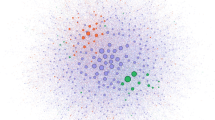Abstract
Emojis have been appearing more and more frequently in court cases since at least 2015, used as evidence for or against intent to commit a crime or as signs of a defendant’s consciousness of guilt. They have also become part of an ever-expanding visual lexicon of aggression used by individuals and gangs for making threats or planning criminal activities. This essay surveys relevant cases and studies since 2015 that concern this aspect of emoji communication—an aspect that was hardly anticipated by the congeners of these picture words, who introduced them as communicative tools to foster benign interactions in the global village, not as weapons of violence and criminality. The main conclusions that can be extrapolated from the present review are as follows: (a) emojis can, in fact, no longer be viewed merely as signs designed to engender congenial communication, as was intended by their inventors; (b) they can no longer be excluded as evidence in courtrooms, given their penetration into everyday digital communications; and (c) they require special attention by both legal and criminal investigative practices and institutions. The last point implies the need for a field that can be called simply “emoji forensics.”
Similar content being viewed by others
References
Balasuriya, L., D. Doran, A. Sheth, and S. Wijeratne. 2016. Emoji-Net: A machine-readable emoji sense inventory. PubMed 10: 527541.
Bankov, K. 2020. Cyberbullying and hate speech in the debate around the ratification of the Istanbul convention in Bulgaria: A semiotic analysis of the communication dynamics. Social Semiotics 30: 344–364.
Benavides-Vanegas, F.S. 2020. Emoticons, memes and cyberbullying: Gender equality in Colombia. Social Semiotics 30: 328–343.
Birch-Carrière, L. 2019. Say it with [a smiling face with smiling eyes]: Judicial use and legal challenges with emoji interpretation in Canada. International Journal of the Semiotics of Law 32: 283–319.
Breinholt, J. and Brewer, M. 2020. Troublesome emojis in criminal Cases. Technology & Marketing Law Blog. https://blog.ericgoldman.org/archives/2020/01/troublesome-emojis-in-criminal-cases-guest-blog-post.htm.
Broekman, J.M. 2020. Like your emoji: A philosophical context. Social Semiotics 30: 415–429.
Burton, C. 2016. Emojis & dialects: What do your emojis say about you. Rife Magazine. https://www.rifemagazine.co.uk/2016/02/emojis-dialects-what-do-your-emojis-say-about-you/.
Chambers, J.K., and P. Trudgill. 1998. Dialectology. Cambridge: Cambridge University Press.
Cheng, L., S. Yuxiu, and J. Li. 2020. Aggressiveness of emojis before the court: A sociosemiotic interpretation. Social Semiotics 30: 365–378.
Cherney, M. 2018. Lawyers faced with emojis and emoticons are all ¯\_(ツ_/¯. Wall Street Journal. https://www.wsj.com/articles/lawyers-faced-with-emojis-and-emoticons-are-all-1517243950?mod=rss_Technology.
Couch, J. 2020. The language of social media: What lawyers need to know. GPSolo 37: 66–68.
Coulthard, M., and A. Johnson. 2007. An introduction to forensic linguistics. London: Routledge.
Crystal, M.A., B. Ververs, and M. Khan. 2021. The faces of justice: A study of the interpretation of emoji messages in the court process. Commonwealth Law Bulletin 47: 1–36.
Danesi, M. 2013. Signs of crime: Introducing forensic semiotics. Berlin: Mouton de Gruyter.
Danesi, M. 2016. The semiotics of emoji: The rise of visual language in the age of the Internet. London: Bloomsbury.
Danesi, M. 2020. The art of the lie: How the manipulation of language affects our minds. New York: Prometheus.
Danesi, M. 2021. Linguistic relativity today: Language, mind, society, and the foundations of linguistic anthropology. New York: Routledge.
Danesi, M., L. Ervo, L. Kindberg, and K. Nordlöf. 2021. The #MeToo movement as an e-discourse: Social and legal effects. HumaNetten 46: 2–20.
Dorn, S. 2019. New York gangs are using emojis as a secret language to plan crimes. New York Post. https://nypost.com/2019/08/03/new-york-gangs-are-using-emojis-as-a-secret-language-to-plan-crimes/.
Foltz, K.A., and J. Fray. 2020. Emoji goes to court: An analysis of emoji in court proceedings and implications for legal practice. Communication Law Review 20: 109–125.
Frege, G. 1879. Begiffsschrift eine der Aritmetischen nachgebildete Formelsprache des reinen Denkens. Halle: Nebert.
Glikson, E., A. Chesin, and G.A. van Kleef. 2017. The dark side of a smiley: Effects of smiling emoticons on virtual first impressions. Social Psychology and Personality Science. https://doi.org/10.1177/1948550617720269.
Goffman, E. 2019. The presentation of self in everyday life. New York: Anchor.
Goldman, E. 2018. Emoji and the law. Washington Law Review 93: https://www.law.uw.edu/wlr/print-edition/print-edition/vol-93/3/emojis-and-the-law.
Grimmelmann, J. 2018. The letter (and emoji) of the law, Jotwell (April 24, 2020) (reviewing Eric Goldman, Emojis and the Law, 93 Wash. L. Rev. 1227 2018)), https://cyber.jotwell.com/the-letter-emoji-of-the-law/.
Halliday, M. 1976. Anti-languages. American Anthropologist 78: 570–584.
Halliday, M. 1985. Introduction to functional grammar. London: Arnold.
Harrison, S. 2019. How emojis have invaded the courtroom. Slate https://slate.com/technology/2019/11/emoji-court-cases-crime-free-speech-contract-law.html.
Herzfeld, O. 2019. The legal implications of emoji. Forbes. https://www.forbes.com/sites/oliverherzfeld/2019/10/24/the-legal-implications-of-emoji/?sh=d573e4f6bbd4.
Hickey, S. and Nedim, U. 2017. Emojis inside the courtroom. Sydney Criminal Lawyers. https://www.sydneycriminallawyers.com.au/blog/emojis-inside-the-courtroom/.
Holgado, Y. H. 2020. Emojis: Criminals best friends. Archyde. https://www.archyde.com/emojis-criminals-best-friends/.
Holtgraves T. and Robinson C 2020 Emoji can facilitate recognition of conveyed indirect meaning. PLoS ONE 15(4): e0232361.
Jakobson, R. 1960. Linguistics and poetics. In Style and language, T. Sebeok ed. Cambridge, Mass.: MIT Press.
Janssen, E. 2018. Hearsay in the smiley face: Analyzing the use of emoji as evidence. St. Mary’s Law Journal 49: 699–726.
Joinson, A.N. 1998. Causes and effects of disinhibition on the internet. In The psychology of the Internet, ed. J. Gackenbach, 43–60. New York: Academic Press.
Kaye, L. K., Malone, S. A., and Wall, H. J. 2017. Emojis: Insights, affordances, and possibilities for psychological science. Trends in Cognitive Sciences. DOI:https://doi.org/10.1016/j.tics.2016.10.007.
Kirley, E., and M. McMahon. 2018. The emoji factor: Humanizing the emerging law of digital speech. Tennessee Law Review 85(2): 1–61.
Krippendorff, Klaus. 2004. Content analysis: An introduction to its methodology. Thousand Oaks, CA: Sage.
Leone, M. 2020. Mona Lisa’s emoji: Civilization and its discontents. Social Semiotics 30: 312–327.
Lu, X., Ai, W., Liu, X., Li, Q., Wang, N., Huang, G. and Me, Q. 2016. Learning from the ubiquitous language: an empirical analysis of emoji usage of smartphone users. In Proceedings of the 2016 ACM international joint conference on pervasive and ubiquitous computing September 2016, pp. 770–780. https://doi.org/10.1145/2971648.2971724.
Matulewska, A., and D.J. Gwiazdowicz. 2020. Cyberbullying in Poland: A case study of aggressive messages with emojis targeted at the community of hunters in urbanized society. Social Semiotics 30: 379–395.
Maxwell, S. 2017. How gang members could be using emojis. The Atlanta Journal-Constitution. https://www.ajc.com/news/national/how-gang-members-could-using-emojis/tQp0v8yYPVcPW7iUDxyYSK/.
McLuhan, M. 1962. The Gutenberg alaxy: The making of typographic man. Toronto: University of Toronto Press.
McMahon, M., and E. Kirley. 2019. When cute becomes criminal: Emoji, threats and online grooming. Minnesota Journal of Law, Science & Technology 21: 37–92.
Miller, H. 2016. Investigating the potential for miscommunication using emoji. Grouplens. https://grouplens.org/blog/investigating-the-potential-for-miscommunication-using-emoji/.
Miller, H., Thebault-Spieker, J., Chang, S., Johnson, I. Terveen, L., and Hecht, B. 2016. “Blissfully happy” or “ready to fight”: Varying interpretations of emoji. Proceedings of the Tenth International AAAI Conference on Web and Social Media (ICWSM 2016), pp. 259–268.
Moore, M. 2019. The last word of emojis: They are communications, but of what? Probate and Property 33(6).
Moran, C., and G. Hawisher. 1998. The rhetorics and languages of electronic mail. In Page to screen: Taking literacy into the electronic era, ed. I. Snyder, 80–101. New York: Routledge.
Murphy Kelly, S. 2019. Emojis are increasingly coming up in court cases. Judges are struggling with how to interpret them. CNN Business. https://sacramento.cbslocal.com/2019/07/08/emojis-threat-judge-court-cases-harassment/.
Mystal, E. 2019. Is emoji law going to be a thing? Above the Law: https://abovethelaw.com/2019/02/is-emoji-law-going-to-be-a-thing/.
Nicaso, A., and M. Danesi. 2021. Organized crime: A cultural introduction. London: Routledge.
Patrice, J. 2017. Court rules emoji can convey intent. Above the Law. https://abovethelaw.com/2017/06/court-rules-emoji-can-convey-intent/.
Robson, R. 2019. Emoji law 101. https://robsonlaw.com/2019/11/emoji-law-101/.
Scott-Möise, E. 2019. The scrivener: emoji and emoticons in legal writing: ¯\_(ツ)_/¯. Nelson Mullins. https://www.nelsonmullins.com/idea_exchange/insights/the-scrivener-emoji-and-emoticons-in-legal-writing-_-_.
Skinner, P., and E. Cock. 2018. Approaching facial difference: Past and present. London: Bloomsbury.
Social Semiotics 2020. Getting far too emotional with emojis: The digital influencers in e-discourse aggressiveness, Volume 30, Issue 3.
Sullivan, B. 2016. What is the evidentiary standard for emojis? The American Bar Association Journal. https://scholarship.law.duke.edu/cgi/viewcontent.cgi?article=6656&context=faculty_scholarship.
Trujillo, J. and Vitale, S. 2021. Misguided strategy: New York City’s decision to criminalize gangs. In D. C. Routledge international handbook of critical gang studies, Brotherton, D. C. and R. J. Gude, eds. New York: Routledge.
Wagner, A. 2019. E-victimization and e-predation theory as the dominant aggressive communication: The case of cyber bullying. Social Semiotics 29: 303–318.
Wagner, A., and W. Yu. 2021. Machiavellian apparatus of cyberbullying: Its triggers igniting fury with legal impacts. International Journal of the Semiotics of Law. https://doi.org/10.1007/s11196-021-09841-x.
Wagner, A., S. Marusek, and W. Yu. 2020. Emojis and law: Contextualized flexibility of meaning in cyber communication. Social Semiotics 30: 396–414.
Wagner, A., S. Marusek, and W. Yu. 2020. Sarcasm, the smiling poop, and e-discourse aggressiveness: Getting far too emotional with emojis. Social Semiotics 30: 305–311.
Wan, W. 2018. How emoji can kill: As gangs move online, social media fuel violence. Washington Post. https://www.washingtonpost.com/news/speaking-of-science/wp/2018/06/13/how-emoji-can-kill-as-gangs-move-online-social-media-fuels-violence/.
Weisser, B. 2015. At silk road trial, lawyers fight to include evidence they call vital: Emoji. New York Times. https://www.nytimes.com/2015/01/29/nyregion/trial-silk-road-online-black-market-debating-emojis.html?_r=0.
Weissman, B. and Tanner, D. 2018. A strong wink between verbal and emoji-based irony: How the brain processes ironic emojis during language comprehension. Plos One (https://doi.org/10.1371/journal.pone.0201727).
Author information
Authors and Affiliations
Corresponding author
Additional information
Publisher's Note
Springer Nature remains neutral with regard to jurisdictional claims in published maps and institutional affiliations.
Rights and permissions
About this article
Cite this article
Danesi, M. The Law and Emojis: Emoji Forensics. Int J Semiot Law 34, 1117–1139 (2021). https://doi.org/10.1007/s11196-021-09854-6
Accepted:
Published:
Issue Date:
DOI: https://doi.org/10.1007/s11196-021-09854-6




